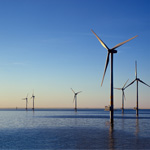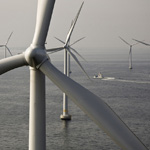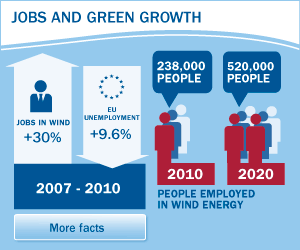 An overwhelming majority of the public in the UK approve of the government providing financial support for renewable energy technologies, according to a new survey. The YouGov poll for the Sunday Times found support from across the political spectrum, with Conservative, Labour, Lib Dem and UKIP voters all agreeing that the government should continue investing in low-carbon technologies.
An overwhelming majority of the public in the UK approve of the government providing financial support for renewable energy technologies, according to a new survey. The YouGov poll for the Sunday Times found support from across the political spectrum, with Conservative, Labour, Lib Dem and UKIP voters all agreeing that the government should continue investing in low-carbon technologies.
The survey found 65% of respondents in favour of government spending money for wind power, while 76% said the same for tidal energy and 78% backed financial support for solar. In comparison, only 49% approved of public financial support for nuclear, 57% for clean coal and just 40% said the government should provide support for shale gas. 47% of respondents considered shale gas projects as damaging to the environment.
Despite this, Chancellor George Osborne recently revealed tax breaks for the fracking industry, with a 30% tax rate for onshore shale gas production, much lower than oil taxes. Osborne called his new tax regime “the most generous for shale in the world”.
 The European wind industry has grown so rapidly over the past decade that it is facing a critical shortage of skilled personnel, a new report reveals. There is currently a shortage of 7,000 qualified personnel required by the European wind energy sector each year, a figure that could increase to 15,000 by 2030 if the number of graduates taking courses relevant to the industry does not rise.
The European wind industry has grown so rapidly over the past decade that it is facing a critical shortage of skilled personnel, a new report reveals. There is currently a shortage of 7,000 qualified personnel required by the European wind energy sector each year, a figure that could increase to 15,000 by 2030 if the number of graduates taking courses relevant to the industry does not rise.
The figures come from a new report by the European Wind Energy Technology Platform (TPWind), based on research by renewable energy consultancy GL Garrad Hassan: “Workers wanted: The EU wind energy sector skills gap”. A full 78% of companies that responded to the TPWind questionnaire said they “found it difficult or very difficult to find suitably trained staff”. This in an EU with an overall 11% unemployment rate, and a youth unemployment rate of 20.9% (5.5 million people between the ages of 15-24).
 The launch of ‘Deep Water: the next step for offshore wind energy’ saw an enthusiastic media focus on the idea that offshore wind could provide Europe with enough electricity to power Europe four times over. The headlines were impressive, but that offshore wind holds massive potential for Europe is not news for anyone following the wind industry.
The launch of ‘Deep Water: the next step for offshore wind energy’ saw an enthusiastic media focus on the idea that offshore wind could provide Europe with enough electricity to power Europe four times over. The headlines were impressive, but that offshore wind holds massive potential for Europe is not news for anyone following the wind industry.
As long ago as 2008, when far less than the current total of 6,040MW of offshore capacity was installed in Europe, the European Commission said that “offshore wind can and must make a substantial contribution to meeting the EU’s energy policy objectives through a very significant increase – in the order of 30-40 times by 2020 and 100 times by 2030 – in installed capacity compared to today.”
EWEA has projected that offshore will see 40 GW installed capacity by 2020, equivalent to 4% of EU electricity demand, and 150 GW by 2030, meeting 14% of EU electricity demand.
 An overwhelming majority of the public in the UK approve of the government providing financial support for renewable energy technologies, according to a new survey. The YouGov poll for the Sunday Times found support from across the political spectrum, with Conservative, Labour, Lib Dem and UKIP voters all agreeing that the government should continue investing in low-carbon technologies.
An overwhelming majority of the public in the UK approve of the government providing financial support for renewable energy technologies, according to a new survey. The YouGov poll for the Sunday Times found support from across the political spectrum, with Conservative, Labour, Lib Dem and UKIP voters all agreeing that the government should continue investing in low-carbon technologies.






 Comments
Comments

